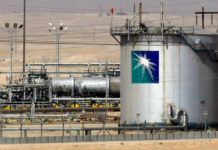Interview by Ahmed Kamel
Former Sudanese first undersecretary of water resources and electricity Eng. Haydar Youssef revealed Israel’s secret role in the Nile Basin crisis, saying Israel has been plotting to seize the Nile water since 1988 by setting a trap for Egypt and Sudan, known as the Nile Basin Initiative.
The cover for getting information and data on the River Nile was done through the World Bank, which financed conferences and meetings and water projects that yielded the Nile Basin Initiative then the Ethiopian Renaissance Dam, he said, stressing that it will turn the River Nile into a channel and its possible collapse will wipe out Khartoum and all of Sudan’s reservoirs.
In the beginning you presented an official memo to the Sudanese Ministry of Water Resources and Electricity in 2011 when you were undersecretary on the Ethiopian Renaissance Dam, what were its contents?
I called on the ministry to form a technical committee to get acquainted with the dangers and benefits of the dam to Sudan. The memo also included the numerous dangers to my homeland and the response was that the dam was beneficial to Sudan. After that I was sacked.
When did Ethiopia start to prepare for establishing the Renaissance Dam?
Preparations for the dam took place 10 years before the launching of the Nile Basin Initiative, which was the reason behind the differences between Egypt and Sudan on the one hand, and the upstream states on the other. It was actually the nucleus of the Renaissance Dam project.
How is that… when the initiative was supported by Cairo and Khartoum and the irrigation officials in both nations?
The Nile Basin initiative is a Zionist idea in the first place and was created in Israel.
How and when was the idea reached?
The initiative was prepared in 1988 through a study by Haggai Erlich, the Israeli water expert. It comprised 280 pages titled “The Cross and the River…Ethiopia, Egypt and the Nile”, and it was completed in 1992. It was funded by the Israeli Science Institution and the US Peace Institute. The study briefly states that the River Nile will become a matter of life and death among the upstream states on the one hand and the downstream states on the other. The study finally stated the need to have Ethiopia establish 26 projects, including the Renaissance Dam and the formation of a grouping or an initiative for the Nile Basin for cooperation that cancels all previous agreements, and groups the upstream nations in one federation.
What was the cover through which the study was carried out?
The cover was the World Bank and donor organisations and countries, and Israel was absent and without the knowledge of either of Egypt or Sudan. I noticed this when I was an envoy of the Sudanese government to scientific research projects funded in upstream countries by the World Bank, the Canadian CID and some European organisations. Countries offered precise and detailed information about the River Nile and the actual uses by the countries. I participated in 1995 in an international project to develop the Equatorial Lakes and during international conferences that were held in each country, signs came out for the need to have a commission for the basin or an initiative in return for the offered grants. In 1997, the World Bank funded the implementation of a project called B3 for cooperation among the Nile Basin states, which was the nucleus for launching the Nile Basin Initiative with full funding from the World Bank. After that, all information on the Nile Basin states was collected particularly Egypt, Sudan and Ethiopia.
Was the dam a subject of discussion at that time?
The Renaissance Dam project was presented after launching the initiative using different names, until points of difference emerged during the Entebbe framework agreement, the supplement to the initiative, namely the right to prior notification as regards water projects, taking decisions unanimously and not by majority and the cancellation of historical agreements. This was objected to by Cairo and Khartoum, and the activities were suspended and they did not sign the agreement.
In your opinion, why did the upstream states adhere to the three controversial points?
The upstream states seek to cancel historical agreements including the 1959 agreement signed between Egypt and Sudan which divides the Nile water into quotas so that the River Nile becomes a “common basin”. The signatory countries of the Entebbe agreement adhere to having the decision by majority, which will allow Israel to have a share in the Nile water, particularly that Ethiopia always states that the Nile Basin water is a Divine Grant, as the Gulf oil that can be sold, and that’s why they insist on the three controversial points.
But doesn’t international law prevent the transfer of the river’s water from one basin to another?
The law has been changed to come in line with Entebbe, as article no. 2 of the agreement on the law of using waterways in non-maritime purposes, sanctioned by the United Nations, states that a waterway country means a country party to this agreement whose region lies in part of the international waterway. It is an agreement enforced since August 2014.
Does that mean that Israel can have water from the River Nile?
According to the law, if Israel established an economic entity with the upstream state, then it has a right to obtain the water, and this is what the countries seek through the article on taking the decision, particularly upstream states where Israel has made a great deal of incursions.
Which country coordinates and plans with Israel?
All upstream states hold talks with Israel, mainly Ethiopia. It is enough that Israel has a whole floor at the Ministry of Water Resources and Electricity in Addis Ababa, and 500 Ethiopian engineers are being trained in Tel Aviv. An agreement was signed between the Ethiopian Ministry of Electricity and Tel Aviv Company to manage electricity in Ethiopia.
Does this agreement give Israel the right to manage electricity from the Renaissance Dam?
The agreement stipulates the running of current and future projects, which stresses the fact that any country that seeks to purchase the Renaissance Dam electricity has to discuss this with Israel.
Who funds the Renaissance Dam, then?
Some countries and international bodies finance the Dam from under the table. There is a report published by the American Newsweek publication clearly stating that the reason behind establishing the Renaissance Dam is to control water.
But some are saying in Sudan that the benefits of the Renaissance Dam to Sudan are numerous.
The dangers of the dam to Sudan are many, as it will reserve 74 billion cubic metres, which is a quantity more than the normal amount provided by the Blue Nile, which does not exceed 48 billion cubic metres, and filling up the reservoir to the level of operation will lead to reducing the monthly output of the Blue Nile. Whenever the filling up of the reservoir is short, only three consecutive years for instance, the harm will be larger on Sudan as the River Nile will turn into a channel. Lake Nasser will not have reserved water again after using all the reserved quantity and all turbines of the dam will stop during the second and the third year.
Some Studies state that the safety rates of the dam are less than others and its collapse is possible.
Of course if this happens then the dam will wipe out Khartoum from the map, because after the completion of reserving water an earthquake will be created in the area due to the enormous weight of the clay-filled water held before the dam, which can cause cracks in the dam and lead to its collapse. This will lead to a catastrophic flood that eliminates three major Sudanese dams, namely Al Ruseiri, Jabal Al Alweya and Senar.
Then why does the Sudanese government adopt the Ethiopian viewpoint, which asserts that the dam has more benefits to Sudan than harm?
I always ask that question and there is no explanation and nobody wants to listen. When I objected to the idea of the Renaissance dam they sacked me as Israel has long been scheming to seize the Nile water. The evidence to that is what was known in the media as the Indian Ambush case, when a phone call by former Egyptian irrigation minister Mahmoud Abu Zeid about the Nile Basin initiative was recorded and was sent to Israel directly. The phone call asserted the confessions of the spy and Israel turns upstream leaders against Egypt as being against development of the Nile Basin states and that Israel seeks to develop these nations while Egypt is standing in the way.
How do you evaluate Egypt and Sudan’s handling of the crisis?
The two nations have no strategy or initiative in dealing with the crisis, and they lack the means of persuading countries of the importance of small reservoirs in generating electricity and giving up large ones that pose a strategic threat to countries behind the dam. They are a target to be hit during times of war.
Was there any coordination between Sudan and Ethiopia before the Dam?
Sudan was surprised in 2011 by the laying down of the foundation stone of the dam and had no information about it. The Ethiopian parliament was also surprised by the construction and the project, which was then called ”X”. The foundation stone was laid without any previous announcement.
What is the solution, in your opinion?
The solution is to persuade Ethiopia with all possible ways to modify the technical specifications of the dam so that it would become smaller to produce a similar amount of electricity. The reservoir’s capacity, according to Ethiopian studies, is only 30 per cent, and its production will not exceed 1,800 megawatts, which is a limited quantity compared with the cost and the amount of reserved water.
Do you expect the Ethiopian government to respond to the outcome of the technical process agreed upon by the three nations?
In fact I am not optimistic and I expect that Ethiopia will not respond and will continue to construct the dam. In Egypt, anyone who wants to construct a building higher than the license obtained, they ask him to stop the work. However, the owner seeks to build a floor or two and gets people to live in it to avoid removal by the authorities, and after that the construction continues and no one can prevent him.














